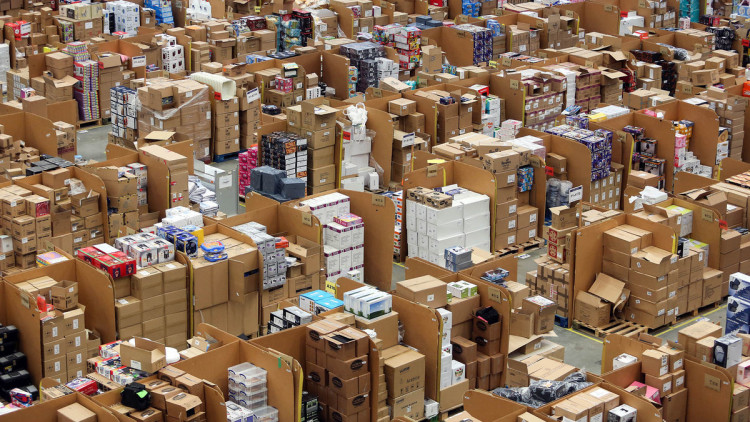Amazon Might Just Transform How Goods Are Shipped: Adam Minter

So Amazon, which prides itself on upending old ways of doing business, is now looking to transform the shipping industry as it has the retail industry. Between October and January, it arranged for the shipping of at least 150 containers of goods from China to the U.S. That’s an infinitesimal proportion of the millions of containers sailing between the two countries every year. But Amazon is just getting started — and the company isn’t alone. Last month, Alibaba started booking space for its suppliers on Maersk container ships, joining a growing wave of e-commerce companies looking to bring greater efficiency and transparency to the $160 billion business of arranging cargo shipments.
Amazon’s interest in the arcane world of freight forwarding dates back to 2012, when the Seattle-based company first allowed Chinese suppliers to sell goods in Amazon’s online marketplaces. Sellers can either ship products directly to customers or to Amazon, which then packs and delivers the products on their behalf. Already, 62 percent of Chinese e-tailers sell on Amazon platforms. Making shipping more straightforward — and, hopefully, cheaper — would in theory make Amazon a more attractive platform for these companies than, say, Alibaba or eBay.
At the moment, there’s nothing easy about shipping, at least not for the kind of small- and medium-sized companies that tend to sell on Amazon. Large appliance brands and other major manufacturers have the scale to arrange and negotiate good rates for shipments directly. Everyone else has to engage the services of a freight forwarder. The role of the forwarder is all-encompassing. The job includes negotiating the best rates and most efficient use of multiple modes of transport, including trucks, rail and ocean-going vessels. The forwarder has to prepare all the accompanying paperwork as well, including customs documentation. When a problem arises — say, a container is delayed at port — the freight forwarder is expected to have the longstanding relationships needed to get it moving again.
The customer-service aspect of freight forwarding in particular has long resisted automation; there’s no easy way to replicate relationships with shipping companies and port officials. But that doesn’t change the fact that freight forwarding is opaque and highly inefficient. For example, the ability of forwarders to determine the best rates and speeds for shipping is oftentimes limited to a proverbial (and sometimes real) rolodex. Online portals where manufacturers can track their shipments are largely unknown. Stop by one of the many freight forwarders who offer their services in a port city like Shenzhen and you’re almost certain to see a fax machine humming.
Amazon thinks technology can eliminate many of these inefficiencies. For example, determining the fastest and most cost-effective shipping rate is really a question of data collection and analytics — two things Amazon does very well (and smaller startups are already doing successfully). Amazon’s size and data capacities should allow the company to buy up many more containers and coordinate more shipments than any individual freight forwarder could.
More efficient logistics would also help Amazon cut down on various transaction costs, including booking fees and government filings. And finally, Amazon, perhaps more than any other company, has the ability to create a one-stop, one-click shipping portal that would vastly simplify the process for manufacturers, while making it easier for them to track shipments. That’s a considerable competitive advantage. Eventually, Amazon could offer the service to any manufacturer, even those not selling on its platforms.
Indeed, for companies such as Amazon and Alibaba — whose OneTouch service has been helping Chinese manufacturers arrange air freight and customs clearances since 2010 — freight forwarding represents a side business that helps them extend their reach deeper into the global supply chain. But as their efforts begin to lift the industry out of the dark ages, technology should make the process of shipping cheaper and more accessible to more companies than ever before. That’s good news for consumers and a globalizing economy that could use a fresh wind in its sails.
This column does not necessarily reflect the opinion of the editorial board or Bloomberg LP and its owners.



No Comment